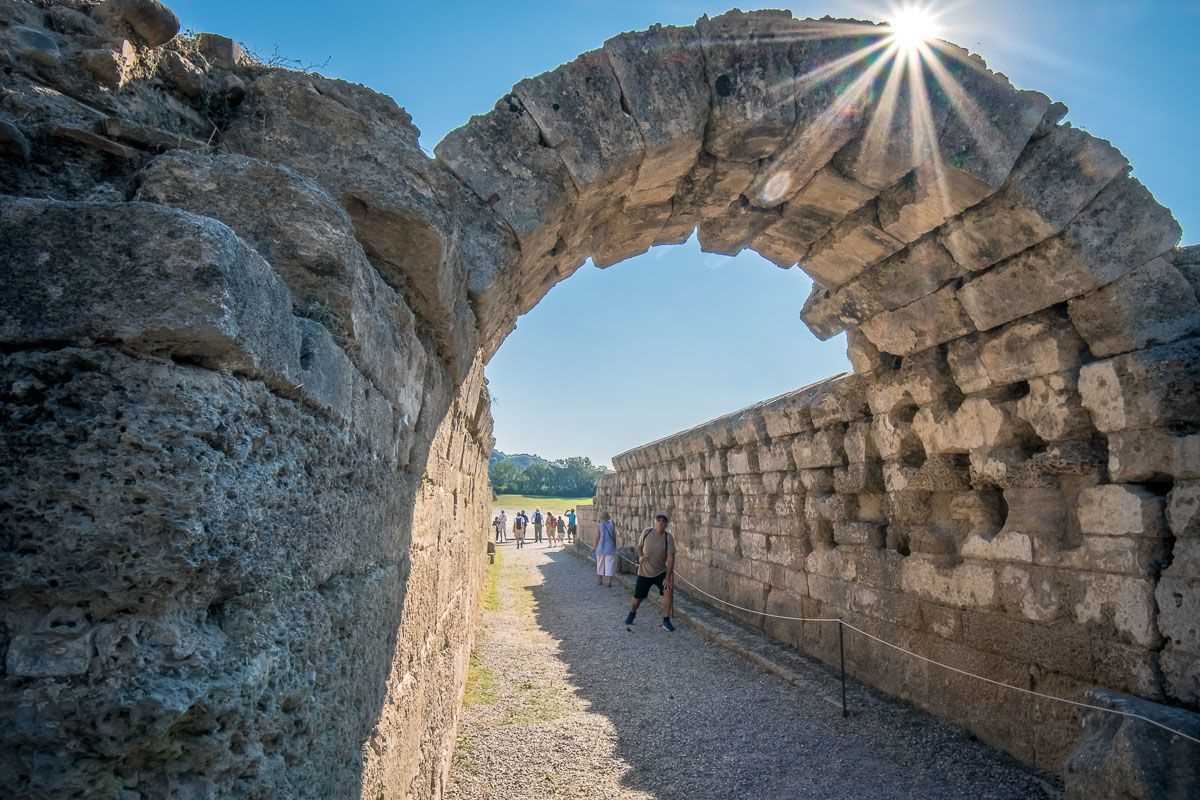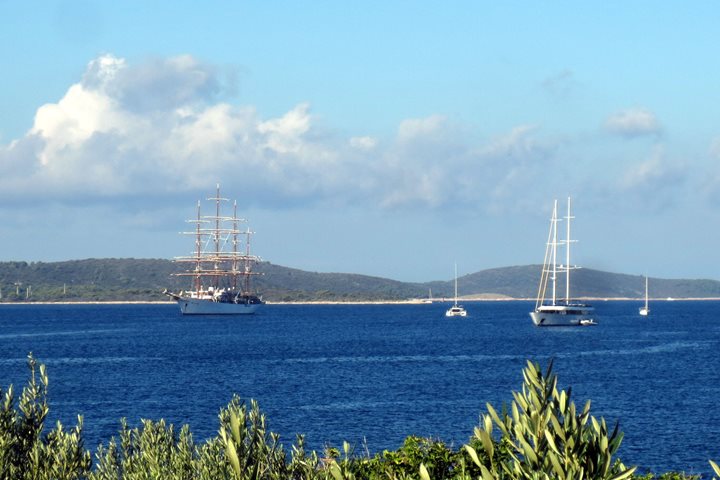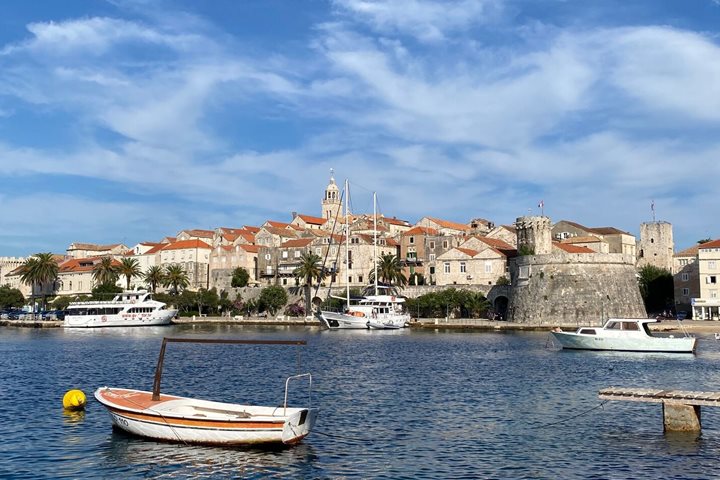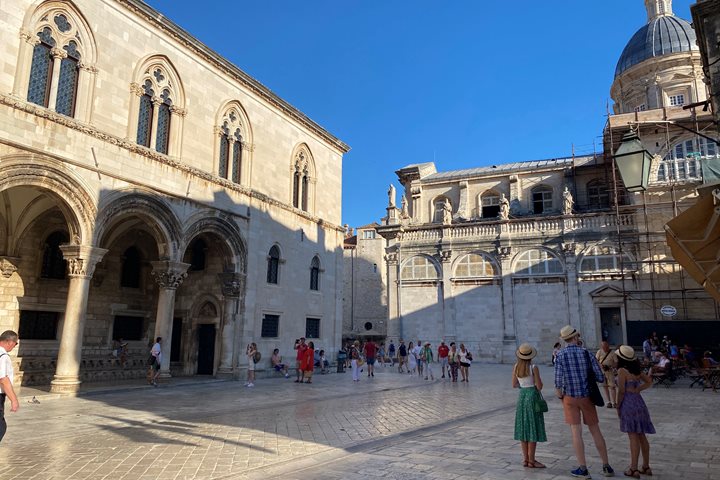This morning we docked on the west coast of the Peloponnese and set off early to explore the venue of the ancient Olympic Games. The games were held annually from 776 B.C. until the fourth century A.D. People flocked to the site from all over ancient Greece.
We started our visit walking past the gymnasium, palestra, and early Christian church that was built over the workshop of Phidias, where he crafted the chryselephantine statue of Zeus—one of the seven wonders of the ancient world. We were impressed with the size of the Leonidaion, a huge guesthouse for distinguished visitors, and then we marveled at the Temple of Zeus and its fallen columns.
Eventually we found our way to the stadium and had mock races. On the way toward the exit we viewed the Temple of Hera and where, in modern times, the Olympic Flame is lit.
The museum exhibits complemented the artistic aspect of the site. Bronze votive offerings from ancient times and marble art from the Classical period are unique and very important. A pedimental sculpture depicted the chariot race of the hero Pelops on one side and the centaurs and Lapiths on the other. The victory of Paionios and Hermes of Praxiteles are highlights of world art, and we could not believe that among the artifacts on display was the helmet of Miltiades—the general who led the Athenians to their unbelievable victory at the battle of Marathon against the Persians in 490 B.C. History was alive…
Returning to National Geographic Sea Cloud, we enjoyed another great buffet lunch on the Lido Deck, a swim in the Ionian Sea, and later in the evening, an olive oil tasting. Guests voted, and while the olive oil of Messenia and Crete received many votes, and it was concluded that Greek olive oil is the best.









